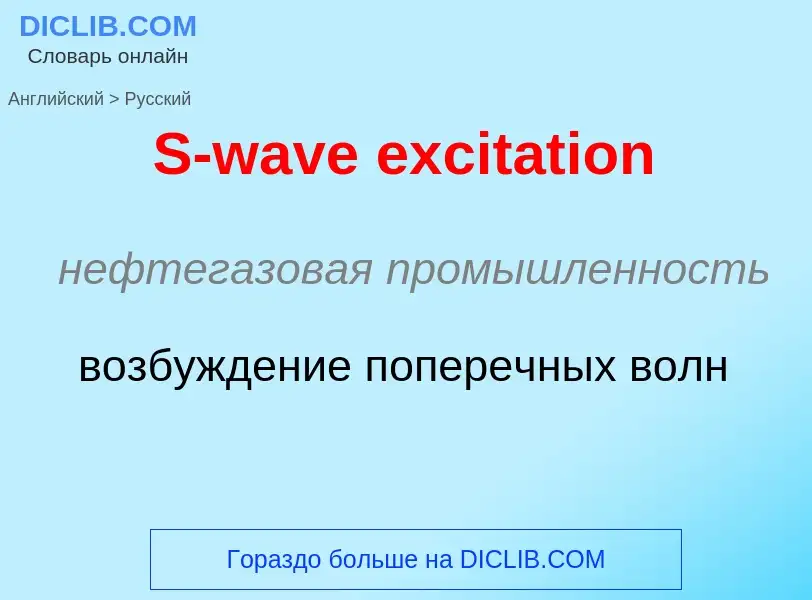Traduzione e analisi delle parole tramite l'intelligenza artificiale ChatGPT
In questa pagina puoi ottenere un'analisi dettagliata di una parola o frase, prodotta utilizzando la migliore tecnologia di intelligenza artificiale fino ad oggi:
- come viene usata la parola
- frequenza di utilizzo
- è usato più spesso nel discorso orale o scritto
- opzioni di traduzione delle parole
- esempi di utilizzo (varie frasi con traduzione)
- etimologia
S-wave excitation - traduzione in russo
нефтегазовая промышленность
возбуждение поперечных волн
строительное дело
сдвиговая волна, волна сдвига
общая лексика
побочная волна
нефтегазовая промышленность
вторичная волна
Definizione
Wikipedia

In seismology and other areas involving elastic waves, S waves, secondary waves, or shear waves (sometimes called elastic S waves) are a type of elastic wave and are one of the two main types of elastic body waves, so named because they move through the body of an object, unlike surface waves.
S waves are transverse waves, meaning that the direction of particle movement of a S wave is perpendicular to the direction of wave propagation, and the main restoring force comes from shear stress. Therefore, S waves cannot propagate in liquids with zero (or very low) viscosity; however, they may propagate in liquids with high viscosity.
The name secondary wave comes from the fact that they are the second type of wave to be detected by an earthquake seismograph, after the compressional primary wave, or P wave, because S waves travel more slowly in solids. Unlike P waves, S waves cannot travel through the molten outer core of the Earth, and this causes a shadow zone for S waves opposite to their origin. They can still propagate through the solid inner core: when a P wave strikes the boundary of molten and solid cores at an oblique angle, S waves will form and propagate in the solid medium. When these S waves hit the boundary again at an oblique angle, they will in turn create P waves that propagate through the liquid medium. This property allows seismologists to determine some physical properties of the Earth's inner core.


